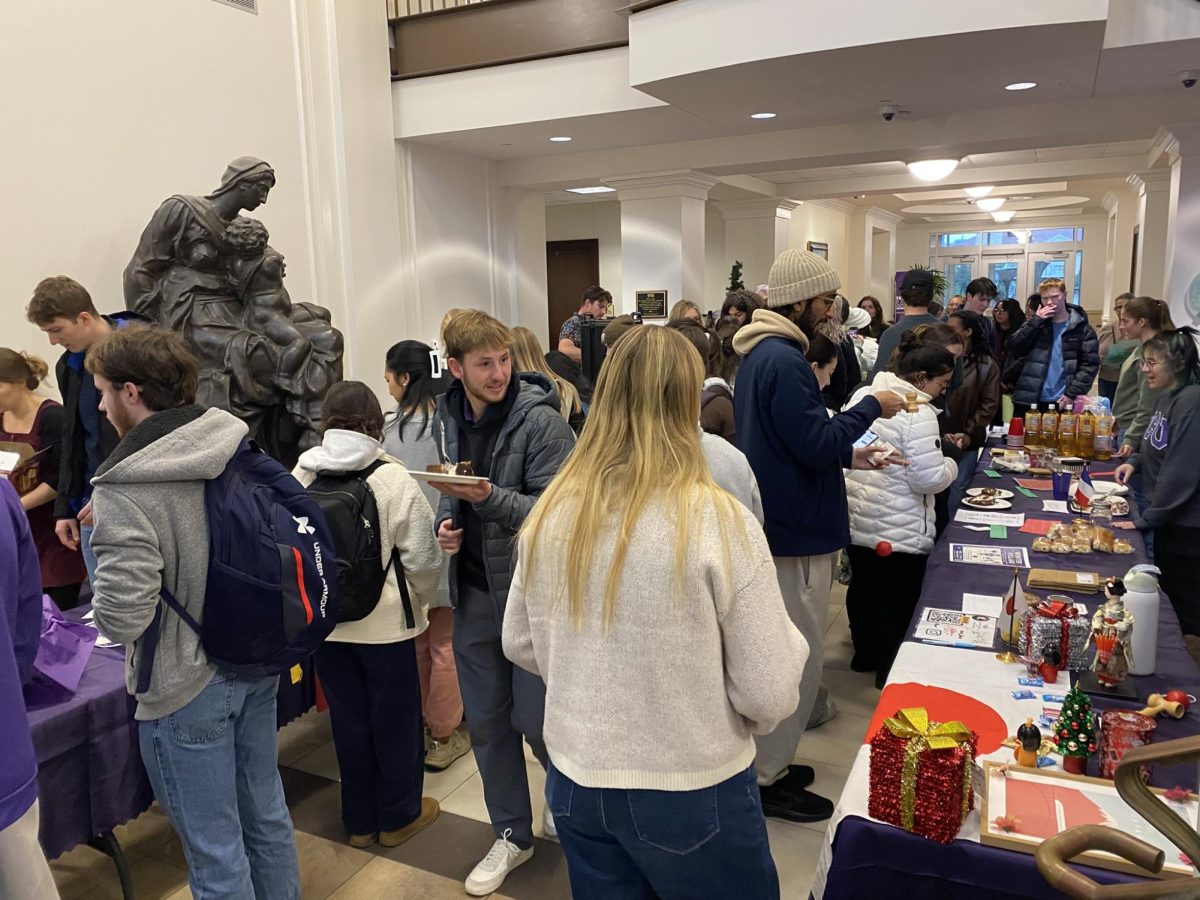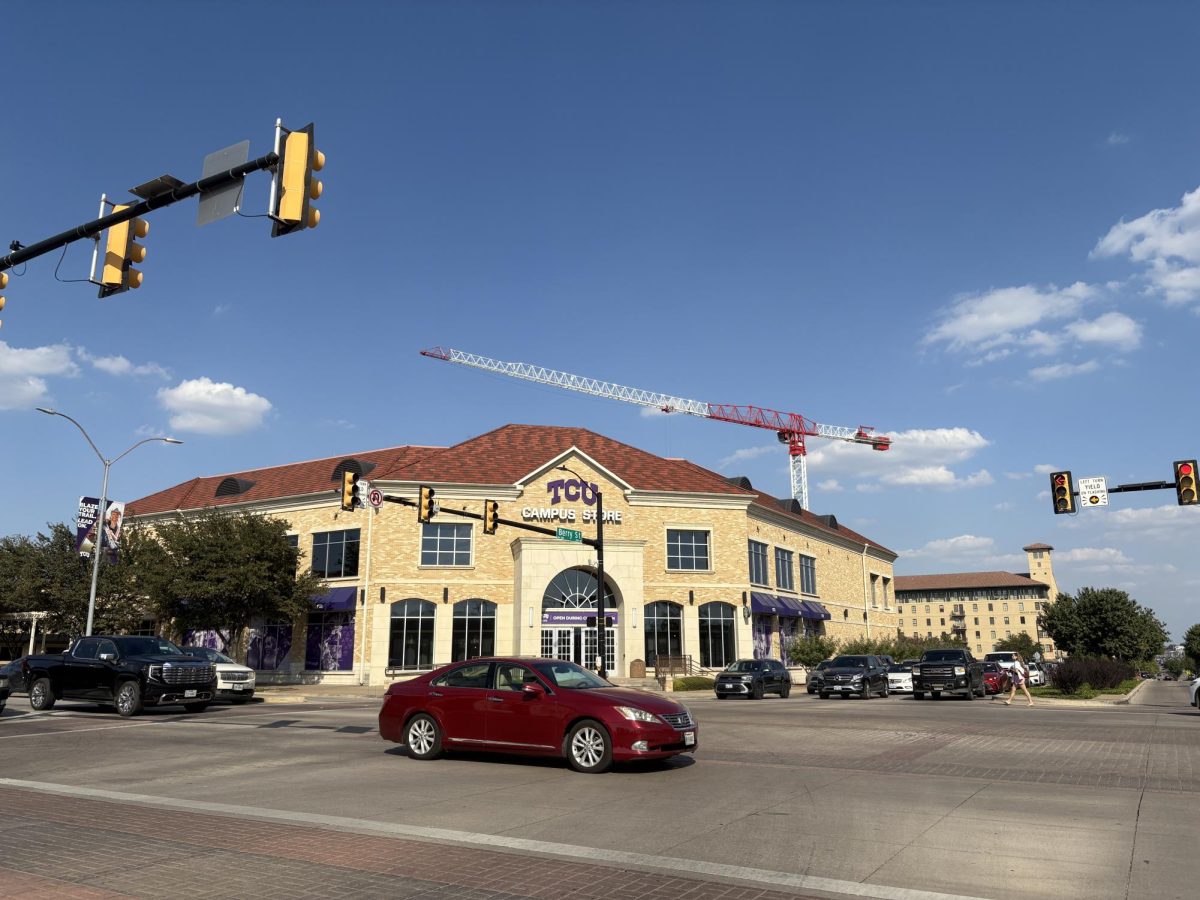There are 88 names forged in bronze at the Veterans Plaza in front of Reed Hall, but some on campus wonder if students know why those names are there.
The plaza is dedicated to TCU students and alumni who died during military service. The bronze plaques record the names of former Horned Frogs who died in both World Wars and subsequent conflicts.
However, some students like junior strategic communication major Cristina Mungilla walk through the memorial without glancing at the names.
Mungilla, a veteran, said that when she first arrived on campus she did not realize the plaza was a memorial.
“For me, it wasn’t clearly marked,” she said. “You’ve got this big Texas Christian University [sign] that’s right there, and so when I was first on campus, I thought that was just a neat little center or entrance to the university.”
She said it was only when she stopped and looked at the plaques that she realized the significance of the space.
April Brown, Veterans Services Task Force chairwoman, said most people are unaware of what the memorial signifies. The task force works with the Student Veterans Alliance to organize a wreath-laying ceremony at the plaza each year as part of Veterans Celebration Week.
Veterans Celebration Week takes place each year during the week of Veterans Day. It includes a number of events like “Walk With a Vet” and the veterans celebration luncheon.
She said the ceremony and Veterans Celebration Week help people understand the meaning of the plaza.
“I think, within itself, the celebration has allowed people to even know that the plaza exists,” she said. “Because people walk by it every day, and you don’t really know what the meaning of it is. But the celebration has highlighted that.”
Ronald Pitcock teaches a class in the fall that focuses on memorials. He said that often remembering and honoring veterans “isn’t at the top of our minds.”
“The TCU community has to be intentional about creating awareness around the memorial and making it a vibrant space,” he said. “Effective memorials will make the case themselves, but [they] also depend upon the work of people to create awareness around the memorial.”
Mungilla said the space could have signs that clearly explain the meaning and symbolism of the space. She also suggested a daily ritual that could make use of the plaza.
During a speech at the plaza’s dedication in 2005, Chancellor Victor Boschini said, “Generations of TCU students to come, ROTC cadets, their families, their friends and other campus visitors [would] be reminded of the bravery, of the valor, of the sacrifices of those who are honored with this Veterans Plaza.”
However, Pitcock said the biggest problem with the memorial is that there is not a sense of reverence when people pass through the space.
Brown said there is no committee or organization that deals specifically with the memorial, which is one reason why it sometimes is forgotten. She said members of the task force are volunteers, so there is a limit of what they can be asked to do.
She also said that if students took more ownership in honoring veterans, even as simple as planting flags in the plaza, the space would be more effective.
Pitcock said it is good that the university does have a memorial dedicated to veterans, and that the memorial is in a central part of campus.
He said that students, however, must play an active role in creating awareness about the memorial among their classmates.
“When a memorial’s working,” he said, “and the awareness of the memorial exists, people walk into that space and they feel the power of remembrance.”




